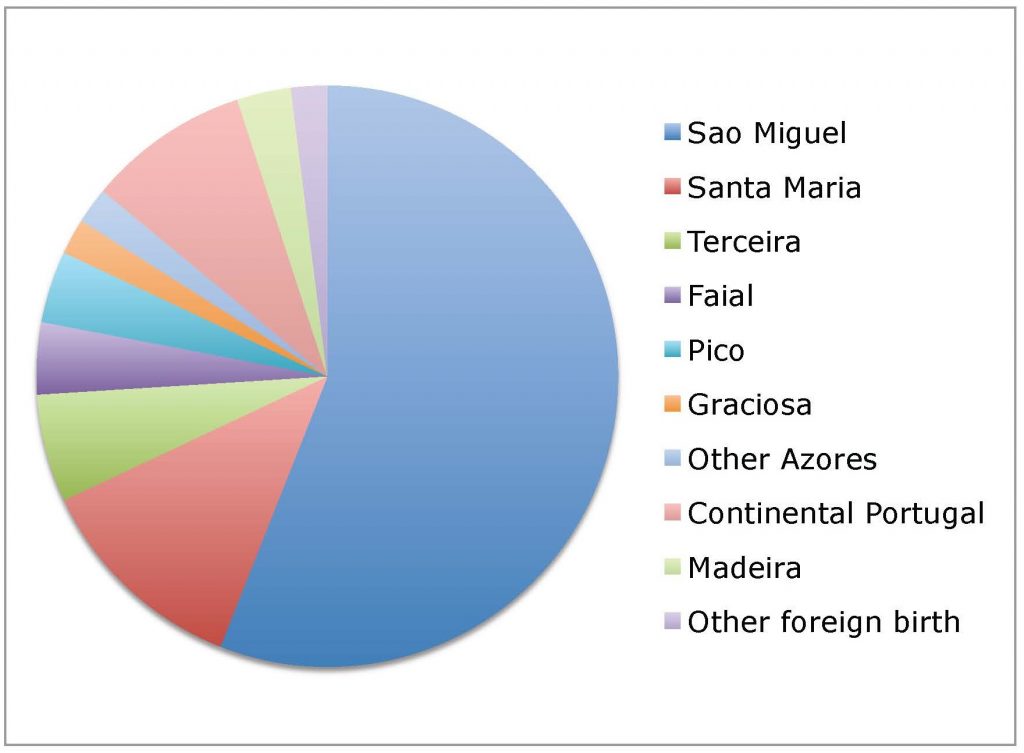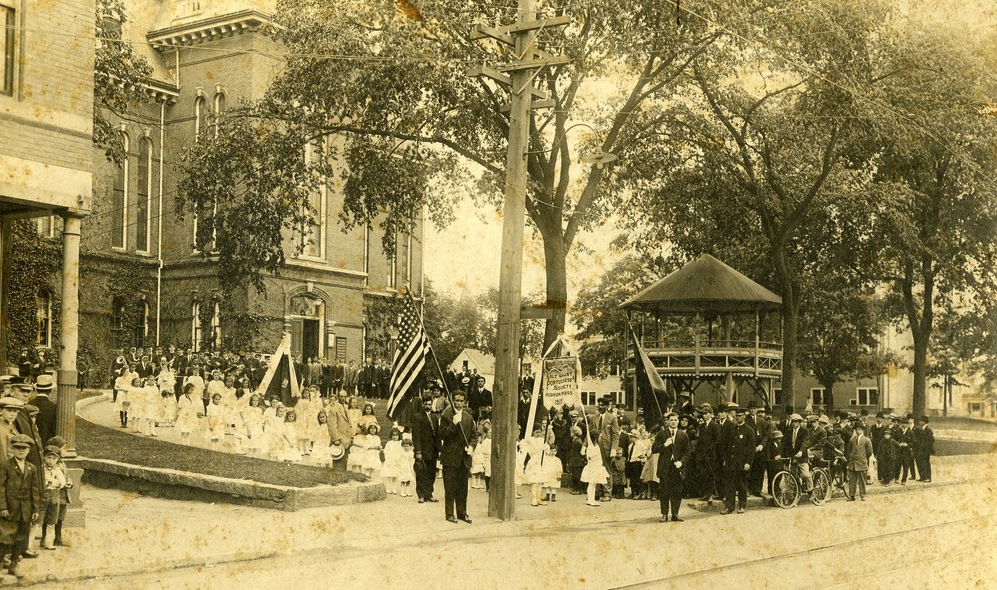Procession of the Holy Ghost Portuguese Society on Trinity Sunday in Hudson, Mass., 1915. Courtesy Hudson Historical Society.
Portuguese men first arrived in Massachusetts via American whaling ships that recruited crew members from the island of Faial in the Azores. Colonized by Portugal, the Azorean archipelago lay about 850 miles west of Portugal in the mid-Atlantic and was an important supply point for the whaling ships. Azorean crewmen first arrived in the whaling port of New Bedford prior to the Civil War. Most had been farmers and fishermen in the Azores, where overpopulation and land pressures drove many to sea and abroad in search of work. They soon settled across southeastern Massachusetts, bringing their wives and families to join them.
A small number made their way north to the Boston area. The beginning of direct steamer service from Faial to Boston in 1902 made the transatlantic trip easier, convincing more to come. Increasingly, migrants to Boston also arrived from neighboring islands such as Saõ Miguel and Santa Maria as well as from Madeira, another Portuguese-ruled island to the southeast. Only a small percentage came from mainland Portugal. As with other European groups, Portuguese immigration peaked in the 1910s and then fell sharply with immigration restriction in the 1920s.
In 1957, however, a series of volcanic eruptions and earthquakes devastated the island of Faial, causing many to flee. Responding to calls by Portuguese Americans and Massachusetts Senator John F. Kennedy, Congress passed the Azorean Refugee Act in 1958, which allowed several thousand Azoreans to enter the US outside the quotas. With family connections to older generations of Faial emigrants, many of the refugees came to Massachusetts. With the passage of the Hart-Celler Act in 1965, increased quotas and family reunification exemptions allowed for additional migration. This second wave peaked in the 1970s, but even today, the Portuguese in greater Boston make up the largest foreign-born group from Europe.
Settlement

Origins of foreign-born Portuguese in Cambridge and Somerville, 1977. From James P. Ito-Adler, “The Portuguese in Cambridge and Somerville,” Cambridge Department of Community Development, September 1980, p. 42.
While the majority of Portuguese immigrants settled in southeastern Massachusetts, a smaller number moved north to Boston and Cambridge. Beginning in the 1880s, sizeable Portuguese communities developed in Boston’s North End, East Cambridge, and East Boston. After 1900, the Portuguese population of Cambridge surpassed that of Boston and included many new arrivals from the islands of Saõ Miguel and Santa Maria. By the mid-twentieth century, Cambridge Street had become a commercial mecca of Portuguese-owned stores and businesses in East Cambridge that served immigrants across the region. Portuguese families also moved into neighboring Somerville as well as to the towns of Hudson, Peabody, and Gloucester.
In the city of Boston, the foreign-born Portuguese population gradually declined after 1910. But other Portuguese American communities continued to grow, and the post-World War II wave of Azorean newcomers mainly settled in these same towns and cities. By the 1960s, Somerville had attracted hundreds of Portuguese families and homeowners, making it the largest Portuguese American community in metro Boston.
Work
As the whaling industry died out in the 1870s, Azorean immigrants turned to seasonal fishing and farming as well as factory work, particularly in the large textile plants of New Bedford, Lowell, and Lawrence. In the Boston area, fishing and factory work were the most common occupations. Portuguese in the waterfront communities of the North End, East Boston, and Gloucester worked as fishermen and dockworkers. As industrial jobs expanded in East Cambridge in the late nineteenth and early twentieth centuries, Portuguese residents there found work in furniture, rubber goods, meatpacking, shoemaking, and other industries. As those industries began closing in the 1970s, Portuguese workers shifted into service jobs such as hotel and restaurant work, cleaning, transportation, and healthcare.


